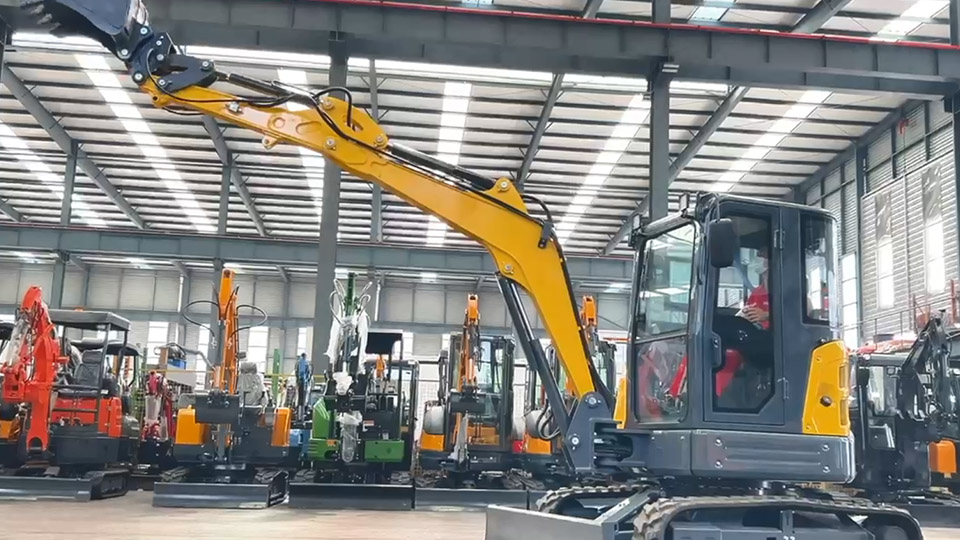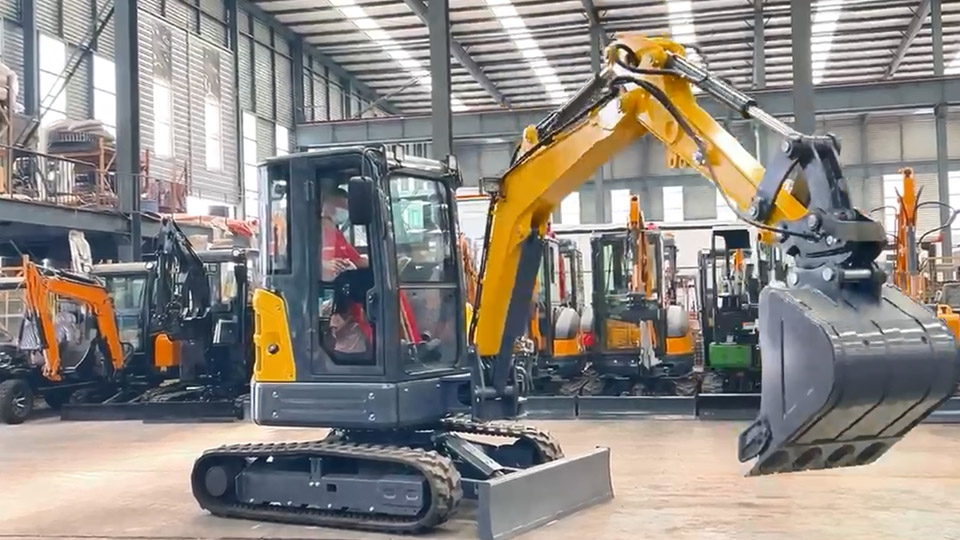The Ultimate Guide to Excavator Attachments and Their Uses: Expanding the Versatility of Heavy Machinery
Excavators, those powerful and versatile workhorses of construction, demolition, and earthmoving, are far more than just digging machines. Their true potential lies in their adaptability, a direct result of the vast array of specialized attachments that can be quickly and efficiently interchanged at the end of their hydraulic arms. These attachments transform a standard excavator into a multi-functional tool carrier, capable of tackling a diverse range of tasks with precision and power. This comprehensive guide delves into the world of excavator attachments, exploring their functionalities, applications, and the critical considerations for selecting the right tool for the job.
The Core Functionality: Hydraulic Power and Quick Couplers
Before diving into specific attachments, it's crucial to understand the underlying mechanisms that enable their versatility. Modern excavators are equipped with sophisticated hydraulic systems that provide the power necessary to operate various attachments. Hydraulic circuits within the excavator deliver pressurized fluid to the attachment, enabling movement, rotation, and force application.
The key to rapid attachment interchangeability lies in the quick coupler. This mechanical or hydraulic device mounted on the excavator's dipper arm allows operators to connect and disconnect attachments within minutes, significantly reducing downtime and increasing on-site efficiency. The choice between a manual and a hydraulic quick coupler often depends on the frequency of attachment changes and the overall operational needs. Hydraulic couplers offer the convenience of in-cab control for attachment swaps, enhancing safety and speed.
A Comprehensive Overview of Excavator Attachments:
The market offers a wide spectrum of excavator attachments, each designed for specific tasks. Here's an in-depth look at some of the most common and specialized options:
1. Buckets: The Foundation of Excavation
Buckets are the most fundamental and widely used excavator attachments, designed for digging, loading, and material handling. They come in various shapes and sizes to suit different materials and applications:
General Purpose Buckets: These are the standard workhorses, designed for excavating loose to medium-density materials like soil, clay, and gravel. They typically feature robust teeth for effective digging.
Heavy-Duty Buckets: Built with thicker steel and reinforced wear parts, these buckets are designed for tougher digging conditions involving rock, compacted earth, and abrasive materials.
Rock Buckets: Characterized by their heavy-duty construction, pointed teeth, and often a narrow profile, rock buckets are specifically designed for excavating fractured rock and other hard materials.
Grading Buckets: Wider and shallower than digging buckets, grading buckets have a smooth cutting edge and are used for leveling, backfilling, and finishing surfaces. Some feature a tilt mechanism for enhanced grading precision.
Trenching Buckets: Narrow buckets designed for digging trenches for pipelines, cables, and drainage systems. Their width is optimized for the specific trench dimension required.
Skeleton Buckets (or Riddle Buckets): These buckets have a series of bars or a mesh bottom, allowing finer material like soil to fall through while retaining larger debris like rocks and roots. They are useful for sorting and separating materials on-site.

2. Hydraulic Hammers (Breakers): The Power of Percussion
Hydraulic hammers are powerful percussion tools used for breaking rock, concrete, asphalt, and other hard materials. They operate by delivering rapid, high-energy impacts.
Applications: Demolition of concrete structures, breaking up rock formations in quarries and construction sites, pavement removal, and trenching in hard ground.
Considerations: Impact energy, blow frequency, and the type of moil point (chisel, wedge, cone, etc.) are crucial factors in selecting the right hammer for the material being broken. Noise and vibration levels are also important considerations, especially in urban environments.
3. Grapples: The Grip for Handling Irregular Loads
Grapples are designed for gripping and lifting irregular-shaped objects that are difficult to handle with buckets or forks. They come in various configurations:
Demolition Grapples: Robust grapples with strong jaws designed for handling debris, concrete, and other demolition materials. They often feature rotating capabilities for precise material placement.
Log Grapples: Specifically designed for handling logs and timber in forestry and logging operations. They typically have wide-opening jaws and strong tines for secure gripping.
Scrap Grapples: Designed for handling various types of scrap metal in recycling yards. They often have multiple tines for increased gripping surface area and may feature rotation for efficient sorting and loading.
Orange Peel Grapples: Multi-tined grapples resembling an orange peel, ideal for handling loose and bulky materials like waste and shredded scrap.
4. Shears: The Cutting Edge for Demolition and Recycling
Hydraulic shears are powerful cutting attachments used for processing metal and concrete.
Metal Shears: Designed for cutting steel structures, pipes, and other ferrous and non-ferrous metals in demolition and scrap recycling applications. They come in various sizes and cutting capacities.
Concrete Pulverizers: Used for crushing and pulverizing concrete structures in demolition. They often have jaws with teeth designed to break down concrete into smaller, manageable pieces, often separating the reinforcing steel.
Combination Shears: Versatile attachments that can both cut metal and crush concrete, offering flexibility on demolition sites.
5. Rippers: Tearing Through Tough Terrain
Rippers are heavy-duty, single-shank attachments with a hardened steel tooth designed to break up hard ground, rock, and frozen soil, making it easier for subsequent excavation.
Applications: Preparing ground for excavation in challenging soil conditions, loosening rock formations, and breaking up asphalt or concrete pavement.
6. Augers: Drilling with Precision
Augers are screw-type drilling attachments used for creating holes in the ground for various purposes.

Applications: Drilling holes for fence posts, signposts, utility poles, foundation piers, and tree planting. Auger size and type can be varied to create holes of different diameters and depths.
7. Compactors: Achieving Soil Density
Compactor attachments are used to compact soil and other granular materials, increasing their density and stability.
Plate Compactors: Vibrating plates attached to the excavator arm, ideal for compacting trenches and smaller areas.
Sheepsfoot Rollers: Cylindrical rollers with protruding feet (lugs) designed for compacting cohesive soils like clay.
Smooth Drum Rollers: Smooth cylindrical rollers used for compacting granular materials like gravel and asphalt.
8. Mulchers and Brush Cutters: Clearing Vegetation
These attachments are designed for clearing vegetation, including trees, brush, and undergrowth.
Rotary Mulchers: Use rotating blades or flails to shred vegetation into mulch. Ideal for land clearing, right-of-way maintenance, and forestry applications.
Brush Cutters: Heavy-duty rotary cutters designed for cutting down larger trees and thick brush.
9. Tilting Buckets: Enhancing Grading and Shaping
Tilting buckets offer increased versatility in grading and shaping applications. They can pivot hydraulically to create slopes, contours, and other desired ground profiles without repositioning the entire excavator.
10. Quick Couplers: The Linchpin of Versatility
As mentioned earlier, quick couplers are essential for maximizing the utility of excavator attachments. They allow for rapid and safe attachment changes, boosting productivity and efficiency on job sites where multiple tasks need to be performed.
Selecting the Right Attachment: Key Considerations
Choosing the appropriate attachment is crucial for maximizing efficiency, minimizing costs, and ensuring the safety of operations. Several factors should be considered:
The Specific Task: The primary driver for attachment selection is the nature of the work to be performed. Digging requires buckets, breaking hard materials necessitates hammers, and handling irregular objects calls for grapples.
Material Properties: The type and density of the material being worked with will influence the choice of attachment. Hard rock requires robust buckets and powerful hammers, while loose soil is suitable for general-purpose buckets.
Excavator Size and Capacity: Attachments must be compatible with the excavator's size, weight, and hydraulic capacity. Overloading the excavator or using an undersized attachment can lead to damage and reduced performance.
Job Site Conditions: Factors like space constraints, terrain, and environmental regulations (e.g., noise restrictions) can influence attachment selection.
Budget and ROI: The cost of the attachment and its potential return on investment (ROI) based on increased efficiency and task completion are important economic considerations.
Availability and Maintenance: The availability of the attachment for rent or purchase and the ease of maintenance and parts availability should also be factored in.
Safety Features: Ensure the chosen attachment has appropriate safety features and that operators are properly trained in its safe operation.
The Future of Excavator Attachments: Innovation and Integration
The field of excavator attachments continues to evolve with advancements in technology and the increasing demand for versatility and efficiency. Some emerging trends include:
Smart Attachments: Integration of sensors, GPS, and other technologies to provide real-time data on performance, location, and maintenance needs.
Increased Automation: Development of attachments with semi-autonomous or autonomous capabilities for specific tasks.
Electric and Hybrid Attachments: Driven by the growing focus on sustainability, electrically powered and hybrid attachments are emerging as cleaner alternatives.
Modular and Multi-Functional Attachments: Attachments designed to perform multiple tasks, further enhancing the versatility of excavators.
Conclusion:
Excavator attachments are the key to unlocking the full potential of these powerful machines. By understanding the diverse range of available tools and their specific applications, contractors and operators can transform a standard excavator into a highly versatile and efficient multi-tasker. Careful consideration of the task at hand, material properties, excavator capabilities, and safety requirements is paramount in selecting the right attachment for the job. As technology continues to advance, the world of excavator attachments will undoubtedly offer even more innovative solutions, further solidifying the excavator's position as an indispensable asset in a wide range of industries. Mastering the use and selection of these attachments is not just about getting the job done; it's about maximizing productivity, minimizing costs, and pushing the boundaries of what these remarkable machines can achieve.
Post time:Sep-25-2020
